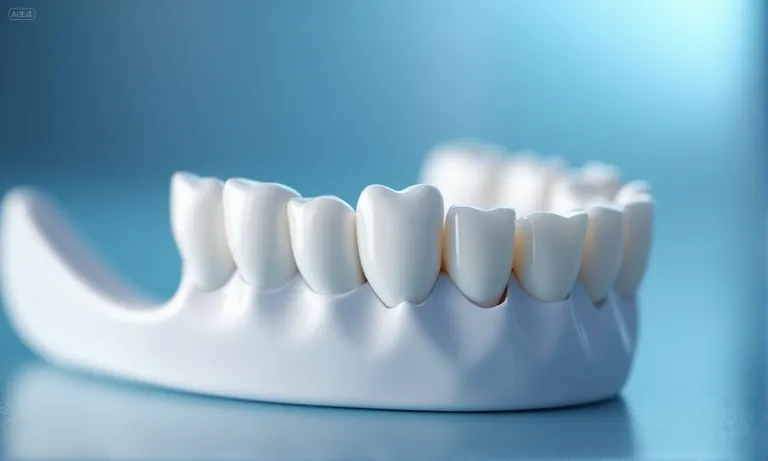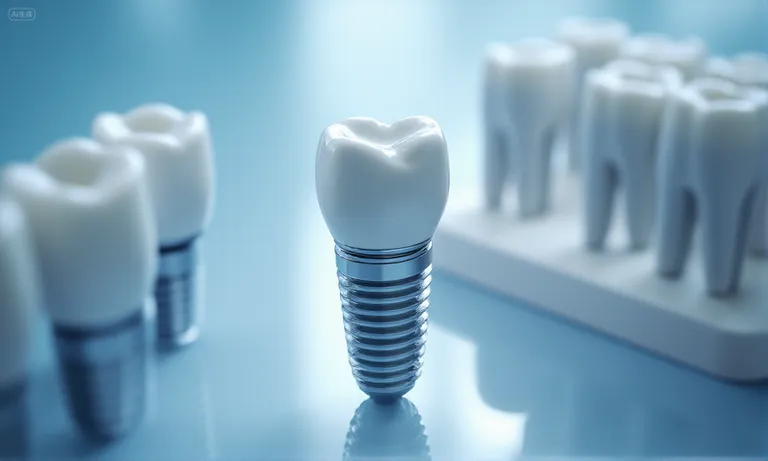Outsourcing dental implant production reduces costs and expands capacity, but selecting the right partner requires more than a price comparison. Practices must evaluate pricing models, hidden costs, quality controls, and the long-term value implants deliver to both patients and the business. Striking the right balance between cost, compliance, and outcomes is key to sustainable growth.
Common challenges include rising operating expenses, unpredictable remake rates, and uncertainty about overseas lab standards. A structured evaluation process addresses these risks by:
- Analyzing pricing models and hidden expenses → ensuring true profitability.
- Verifying material certifications and regulatory compliance → safeguarding quality.
- Projecting long-term outcomes → factoring survival rates, durability, and maintenance costs.
This approach creates clarity, reduces costly mistakes, and enhances patient satisfaction. By weighing cost efficiency against quality and long-term performance, practices can confidently choose a lab partner that delivers consistent results and scales with business needs.
What Pricing Models and Total Cost Factors Should You Consider?
Pricing in dental implant outsourcing is not only about unit fees—it includes the model a lab uses, the hidden costs around shipping and remakes, and the ROI metrics that measure whether outsourcing is financially sustainable. A structured view of both visible and hidden factors ensures practices choose a partner that supports profitability and growth.

Dental-lab-outsourcing-pricing-models
What are the common pricing models in dental implant outsourcing?
Most outsourcing arrangements follow one of three models:
- Per-unit pricing → A fixed cost per restoration (e.g., crowns, abutments), offering predictability and easy cost tracking.
- Tiered pricing → Discounts applied as volume increases, suitable for DSOs and multi-location practices.
- Bundled pricing → A package covering restoration, abutment, and accessories, helping clinics streamline procurement.
Understanding which model fits your case volume and growth stage is critical, since the wrong structure can lead to misaligned incentives or overlooked costs.
How do hidden costs (shipping, customs, remake fees) impact profitability?
While base pricing often looks competitive, hidden costs can erode margins.
| Hidden Cost Factor | Potential Impact on Profitability |
|---|---|
| International Shipping | Adds $20–$50 per case, depending on courier and urgency |
| Customs Duties & Taxes | Vary by country, affecting landed cost per unit |
| Remake & Adjustment Fees | Can rise if quality is inconsistent, consuming chair time |
Practices should calculate these add-ons into the total landed cost per unit. One U.S. clinic we supported discovered that ignoring customs and remake fees inflated their real case cost by 18%, changing the outsourcing ROI picture.
Which ROI metrics help measure the real financial return?
True ROI goes beyond cost-per-unit. Key metrics include:
- Gross margin per restoration → Net revenue minus all lab-related costs.
- Payback period → Time required for outsourcing savings to cover digital investment (e.g., intraoral scanners).
- EBITDA impact → Effect of outsourcing on earnings before interest, taxes, depreciation, and amortization.
Tracking these metrics ensures outsourcing is not only cheaper on paper but also sustainable for long-term profitability. For decision-makers, ROI clarity reduces risk and builds confidence in scaling outsourcing partnerships.
Pricing models, hidden cost analysis, and ROI metrics together define the true economics of outsourcing. Clinics that evaluate all three dimensions avoid unexpected expenses and ensure outsourcing strengthens, rather than weakens, financial performance.
How Should You Verify Quality Standards and Compliance in an Overseas Dental Implant Lab?
Verifying quality in an overseas dental implant lab requires checking material certifications, confirming manufacturing and QC processes, and ensuring transparent communication backed by real experience. Together, these factors reduce risk and build trust in the partnership.

Dental-lab-quality-compliance-check
How can you verify material certifications and sourcing?
Labs should provide documentation for all implant-related materials, especially metals and ceramics. Key checks include:
- ISO 13485 certification → Confirms compliance with international medical device standards.
- FDA or CE material approvals → Ensures biocompatibility of titanium and zirconia used.
- Lot traceability → Verifies that each restoration can be traced back to raw material batches.
Clinics should not hesitate to request certificates of conformity for each shipment. This step prevents uncertainty about whether restorations meet regulatory standards and protects both the practice and patients.
What manufacturing processes and QC checks ensure consistency?
Consistency depends on how a lab controls each production step. Overseas labs with mature systems employ:
- Standardized digital workflows with CAD/CAM validation.
- In-process inspections at milling, sintering, and finishing stages.
- Final microscopic inspection of margins, occlusion, and surface polish.
For example, a mid-sized U.K. distributor we supported required photographic QC documentation before shipment. This protocol reduced adjustment rates on arrival and gave the distributor confidence in scaling outsourcing volume. Reliable processes minimize remakes and protect profitability.
Why are experience and transparent communication critical for reliability?
Even the best systems fail without responsive communication. Clinics should evaluate whether the lab has experience handling similar case volumes and complexity. Transparent communication channels—such as real-time case tracking, feedback loops, and proactive updates—help identify potential problems before they escalate. When a lab is open about challenges, trust deepens, and clinics can plan accordingly.
Verifying certifications, QC processes, and communication practices ensures outsourcing delivers not just restorations, but predictable quality and reduced risk. A compliant and transparent partner is the foundation of a sustainable outsourcing relationship.
How Do You Measure Long-Term Value in Dental Implant Outsourcing?
The long-term value of outsourcing is measured not only by upfront savings but also by durability of materials, ongoing maintenance costs, and long-term success rates. These factors determine whether outsourcing delivers sustainable ROI and clinical reliability over time.

Dental-implant-outsourcing-long-term-value
Why does material choice (titanium, zirconia, hybrid) matter for durability and outcomes?
Material selection directly impacts long-term outcomes. Titanium is known for strength and biocompatibility, zirconia for esthetics and tissue response, and hybrid options for balancing durability with flexibility. An outsourcing lab that offers validated sourcing and machining expertise ensures restorations last, reducing costly remakes or complications. Choosing the right material is not just a technical decision—it shapes patient satisfaction and practice reputation.
What long-term treatment and maintenance costs exist beyond initial placement?
Beyond the implant itself, practices should evaluate:
- Follow-up visits → Extra chair time required if restorations fail prematurely.
- Component replacements → Abutment wear or screw loosening over years of function.
- Remake frequency → Higher if low-quality outsourcing leads to marginal fit issues.
Factoring these costs into ROI calculations clarifies whether “cheaper” outsourcing is truly economical. For example, we have seen clinics save 20% in upfront lab costs but spend more later due to frequent maintenance visits.
How do survival rates and complication risks affect ROI over time?
Implant survival rates—often above 90% at 10 years—are the foundation of value. Outsourcing partnerships that use validated processes and materials help maintain these benchmarks. Conversely, a lab that cuts corners can raise risks of peri-implantitis, prosthetic fractures, or early failures, eroding patient trust and increasing costs. When survival rates remain high, outsourcing supports not only financial returns but also long-term clinical success.
Long-term value in outsourcing is achieved by balancing material durability, predictable maintenance costs, and reliable success rates. Practices that measure outsourcing through these lenses ensure their decisions remain profitable and clinically sound well beyond the first placement.
How Can You Balance Pricing, Quality, and Long-Term Value in Your Final Decision?
The best outsourcing decision is not about chasing the lowest cost—it’s about weighing price, quality, and long-term outcomes together. Practices that balance these three elements achieve sustainable growth while maintaining clinical excellence and profitability.

Dentist-balancing-pricing-quality-long-term-value
Why should you balance immediate cost savings with long-term outcomes and quality assurance?
Focusing only on upfront savings can create hidden risks. Lower pricing may seem attractive but often correlates with inconsistent quality, higher remake rates, or limited material options. On the other hand, paying slightly more for a certified, experienced lab typically reduces remakes, supports durability, and strengthens patient trust. Balancing short-term affordability with long-term outcomes ensures that financial gains don’t come at the expense of clinical standards.
How can a structured evaluation framework guide you to the right lab partner?
A practical framework helps decision-makers compare labs beyond surface-level pricing. Clinics can evaluate:
- Total cost of ownership → Includes shipping, customs, and remake risks.
- Quality metrics → Error rates, certifications, and documented QC processes.
- Long-term ROI → Measured through survival rates, patient satisfaction, and reduced maintenance.
By scoring each lab against these criteria, practices can avoid bias toward the cheapest offer and instead identify partners that balance efficiency with reliability.
What does a sustainable outsourcing partnership look like?
A sustainable relationship goes beyond transactions. It’s built on transparent communication, predictable lead times, and shared commitment to clinical outcomes. The right partner adapts with your practice as volumes grow and case complexity increases. At Raytops Dental Lab, we’ve supported clinics that began outsourcing for cost reasons but stayed for consistent quality and proactive collaboration. This balance transforms outsourcing from a vendor relationship into a strategic alliance.
Balancing pricing, quality, and long-term value ensures that outsourcing decisions support both profitability and patient outcomes. By applying a structured evaluation framework and prioritizing sustainability, practices can confidently select partners that drive growth while safeguarding standards of care.
Conclusion
Outsourcing dental implant production is more than a cost-saving tactic—it is a strategic decision that strengthens profitability, improves quality, and supports long-term growth. By carefully balancing pricing, compliance, and clinical outcomes, practices ensure that outsourcing remains sustainable and patient-centered. Partnering with an experienced overseas dental lab brings not only scalability and advanced expertise but also the consistency needed to maintain trust and reputation. With the right collaboration, implant practices gain flexibility to expand services, deliver predictable results, and compete effectively in an evolving market.


